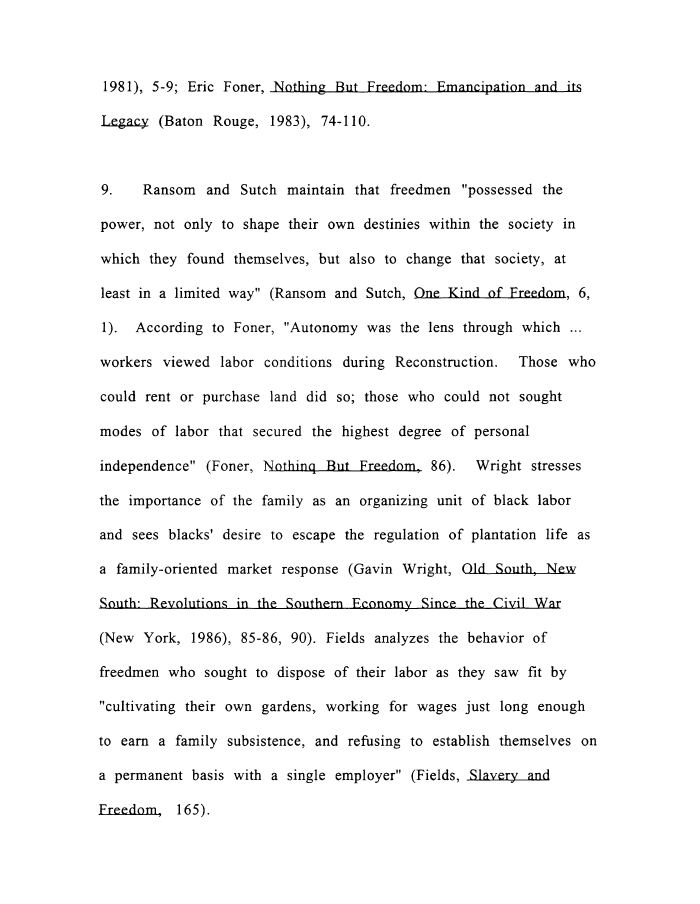 |
||||
|
TASK FORCE TO STUDY THE HISTORY AND LEGACY OF SLAVERY IN MARYLAND (Final Report) 1999/12/31 MdHR 991422 MdHR 991422, Image No: 311 Print image (41K) |
 |
||||
|
TASK FORCE TO STUDY THE HISTORY AND LEGACY OF SLAVERY IN MARYLAND (Final Report) 1999/12/31 MdHR 991422 MdHR 991422, Image No: 311 Print image (41K) |
| 1981), 5-9; Eric Foner, Nothing Rut Freedom: Emancipation and its Legacy (Baton Rouge, 1983), 74-110. 9. Ransom and Sutch maintain that freedmen "possessed the power, not only to shape their own destinies within the society in which they found themselves, but also to change that society, at least in a limited way" (Ransom and Sutch, One Kind of Freedom, 6, 1). According to Foner, "Autonomy was the lens through which ... workers viewed labor conditions during Reconstruction. Those who could rent or purchase land did so; those who could not sought modes of labor that secured the highest degree of personal independence" (Foner, Nothing Rut Freedom, 86). Wright stresses the importance of the family as an organizing unit of black labor and sees blacks' desire to escape the regulation of plantation life as a family-oriented market response (Gavin Wright, Old South3 New South: Revolutions in the Southern Economy Since the Civil War (New York, 1986), 85-86, 90). Fields analyzes the behavior of freedmen who sought to dispose of their labor as they saw fit by "cultivating their own gardens, working for wages just long enough to earn a family subsistence, and refusing to establish themselves on a permanent basis with a single employer" (Fields, Slavery and Freedom., 165). |